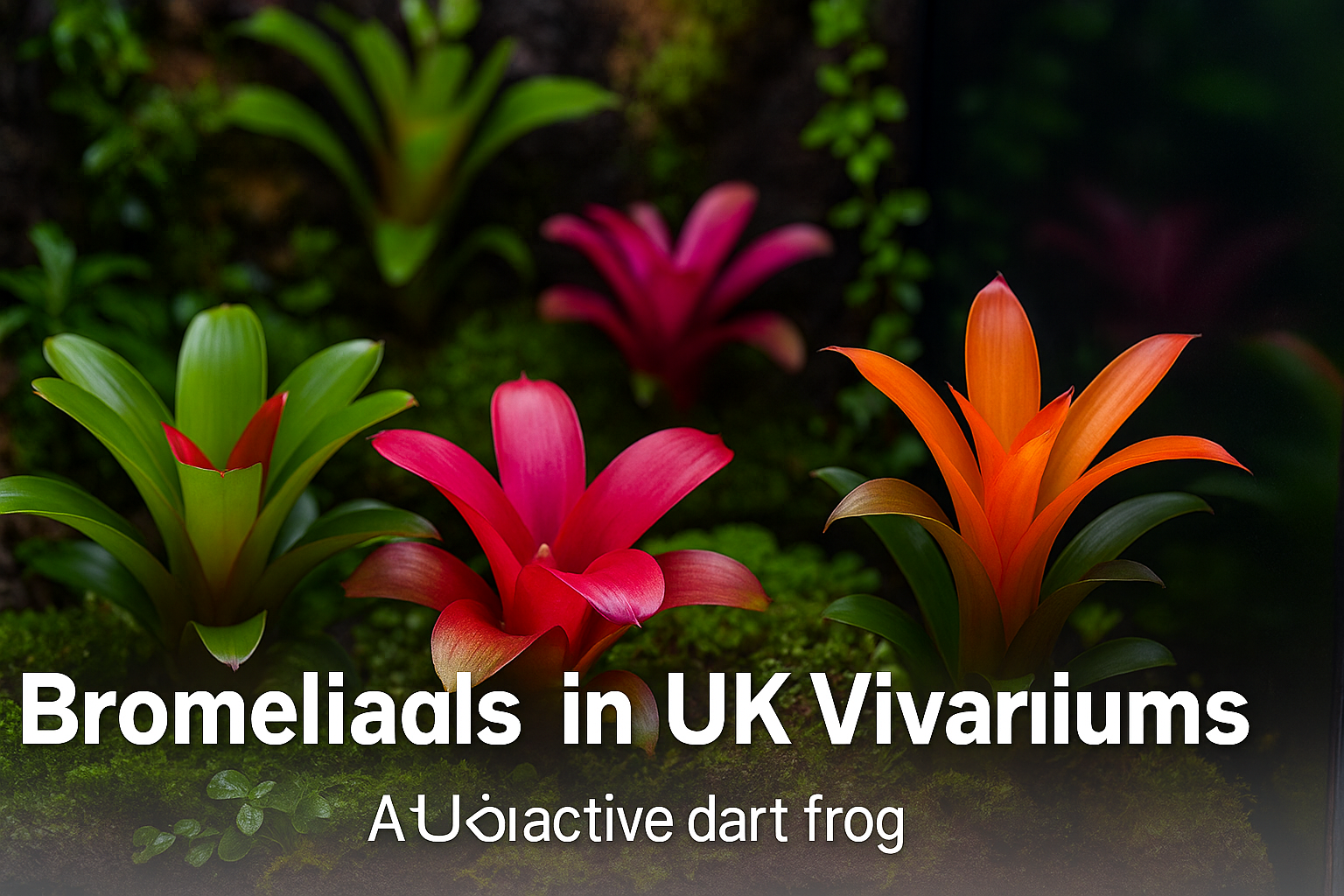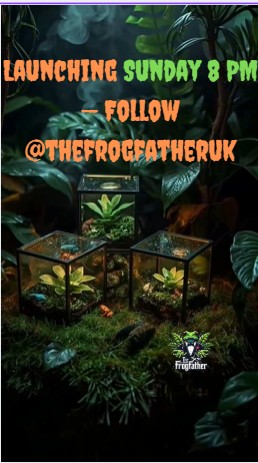Bromeliads for Dart Frog Vivariums (UK Guide): Safe Sourcing, Quarantine & Mounting
Bromeliads make a dart frog enclosure feel like the rainforest canopy in miniature. This guide focuses on the UK—where plants are often imported, water can be hard, and rooms swing from chilly winters to humid summers. Here’s how to choose the right bromeliads, quarantine them safely, and mount them so they thrive with your frogs.
If you prefer removable, sterile deposition points, consider the 3D‑printed bromeliad egg‑laying site—it mimics a safe cup you can clean and inspect.
Why bromeliads work so well for dart frogs
Bromeliads provide leaf axils (“cups”) that collect water and microfauna. Ranitomeya love to perch and deposit tadpoles; Dendrobates use them less, but still benefit from cover and humidity. Properly chosen plants stabilise humidity, add vertical interest, and create egg-deposition sites you can actually see and manage.
Best genera and sizes for vivariums
- Neoregelia (compact forms): sturdy, colourful rosettes; look for names that stay under 20–25 cm.
- Vriesea and Guzmania: softer leaves, elegant shapes; great in mid-height placements.
- Cryptanthus (terrestrial bromeliads): excellent foreground texture; keep the crown dry and base slightly raised from constantly soggy substrate.
For vertical placements where live bromeliads struggle, the Hanging Forever Bromeliad offers a durable, water‑holding stand‑in that won’t rot or topple.
Sourcing in the UK (and what to ask sellers)
Because many bromeliads are imported, ask three things before you buy:
- Were systemic pesticides used recently? Systemics can linger in tissues and cups. If the answer is uncertain, treat and quarantine as if they were.
- How was the plant grown? Tissue-cultured or nursery-grown plants with clean media transition faster than landscape stock.
- What size will it reach? A “pup” may look tiny now but could overwhelm a compact vivarium within months.
Quarantine & detox: simple and cautious
Quarantine all new plants away from animals for at least two weeks. Rinse thoroughly, then follow a gentle, staged approach rather than a single harsh dunk:
- Mechanical clean: Rinse cups and leaf surfaces under lukewarm running water to remove residues and hitchhikers.
- Soak-and-rinse cycles: Alternate 10–15 minute soaks in dechlorinated water with vigorous rinses. Repeat over several days.
- Leaf wipe: Use a soft, damp cloth to wipe both sides of leaves, especially near the base where residues collect.
- Observation: Keep the plant in bright, indirect light. If leaf tips burn or cups smell “chemical”, extend quarantine and keep flushing.
Many keepers also discard original potting media, trimming damaged roots and re-potting in a simple, airy mix (orchid bark + sphagnum + perlite). Keep the crown slightly above the media line.
UK water: chloramine, hardness, and leaf browning
Some UK suppliers use chloramine, and many areas have hard water. Both can mark leaves and irritate sensitive species. Consider:
- Dechlorination: Use a reliable conditioner that handles chloramine, not just chlorine.
- RO/DI for cups: If your tap water leaves white scale or browns the cup edges, switch to RO or a 50–50 RO:tap mix for misting the plant itself.
- Don’t overfill cups: Keep a little turnover—flush and refill weekly to avoid stagnation.
Mounting methods that actually hold
Position matters more than the glue brand. Place bromeliads where they can dry slightly between mists, with cups angled to hold a small pool but not a bathtub. Mounting options:
- Silicone-on-background: Press the leaf base (not the tender crown) to a textured background with aquarium-safe silicone; support with pins or ties for a week while it cures.
- Branch or cork mounts: Tie with soft plant tape or fishing line around the leaf base. Add a moss collar to keep roots humid while they grab.
- Suction hangers & hooks: Useful for glass; check weekly and use a safety tie so a surprise release can’t crush moss or frogs. The BromeliHook flexible egg‑deposition holder makes re‑positioning simple.
Aftercare & fertiliser
Fertilise sparingly. A quarter-strength epiphyte fertiliser once a month during active growth is plenty. Rinse cups before and after to avoid build-up. If algae forms, reduce direct light or frequency.
Troubleshooting
- Leaf tip burn: Often minerals + low turnover in cups. Switch to RO for plant misting and flush cups weekly.
- Rot at the crown: Too wet and stagnant. Improve airflow, reduce direct misting of the crown, and ensure the plant drains.
- Pests: Mealybugs and scale are the usual suspects. Isolate, wipe with damp cotton buds, and repeat soaks/rinses. Avoid oil-based sprays in a vivarium.
For more on plant care decisions in dart frog tanks, see Selecting & maintaining vivarium plants.
Handled this way, bromeliads become low-effort, high-impact architecture your frogs will actually use.



